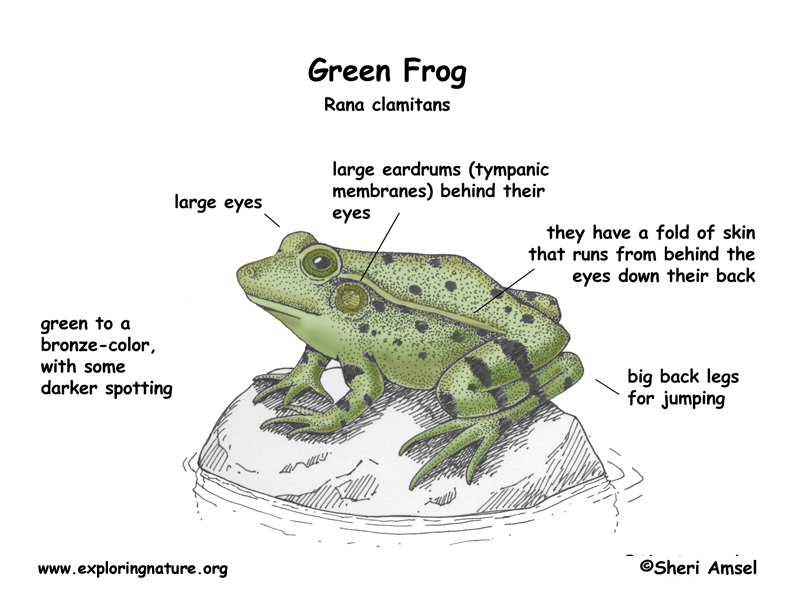

They are found in the eastern part of southern Canada and the U.S.
They live in ponds and slow moving streams.
They are all green to a bronze-color, with some darker spotting. They have a large eardrum. They grow up to about 4.5 inches long.
They sit among water plants with just their eyes and nostrils above the water. They never go far from the water.
They eat insects that land on the water, small fish or other frogs.
They fall prey to birds, snapping turtles, bigger frogs, and any other meat eating pond animal.
Females lay thousands of eggs on the surface of the water.
Kingdom: Animalia
Phylum: Chordata
Subphylum: Vertebrata
Class: Amphibia
Order: Anura
Family: Ranidae
Genus: Rana
Species: R. clamitans
When you research information you must cite the reference. Citing for websites is different from citing from books, magazines and periodicals. The style of citing shown here is from the MLA Style Citations (Modern Language Association).
When citing a WEBSITE the general format is as follows.
Author Last Name, First Name(s). "Title: Subtitle of Part of Web Page, if appropriate." Title: Subtitle: Section of Page if appropriate. Sponsoring/Publishing Agency, If Given. Additional significant descriptive information. Date of Electronic Publication or other Date, such as Last Updated. Day Month Year of access < URL >.
Amsel, Sheri. "Frog (Green)" Exploring Nature Educational Resource ©2005-2024. December 15, 2024
< http://www.exploringnature.org/db/view/63 >


